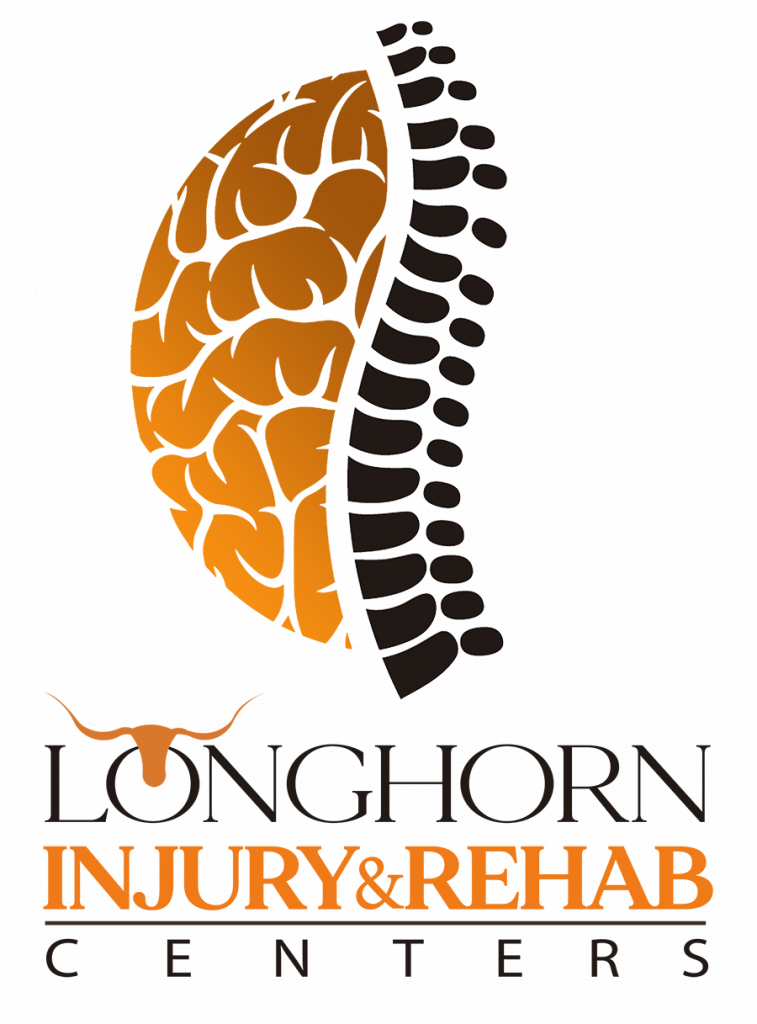
The Role of Chiropractic Adjustments in Whiplash Recovery
Chiropractor | $59 Chiropractic Adjustment | Back Pain Chiropractor
Car accidents can cause various injuries, and one of the most common is whiplash. Whiplash is a common injury that can occur due to sudden, forceful movements of the head and neck. It can lead to significant pain, stiffness, and decreased mobility. Chiropractic adjustments are a cornerstone of chiropractic care for whiplash, as they focus on restoring proper alignment to the spine and relieving pain. In this blog post, we will delve into the importance of chiropractic adjustments in treating whiplash, how they work to restore alignment, and the resulting pain relief for individuals recovering from this type of injury.
What is Whiplash?
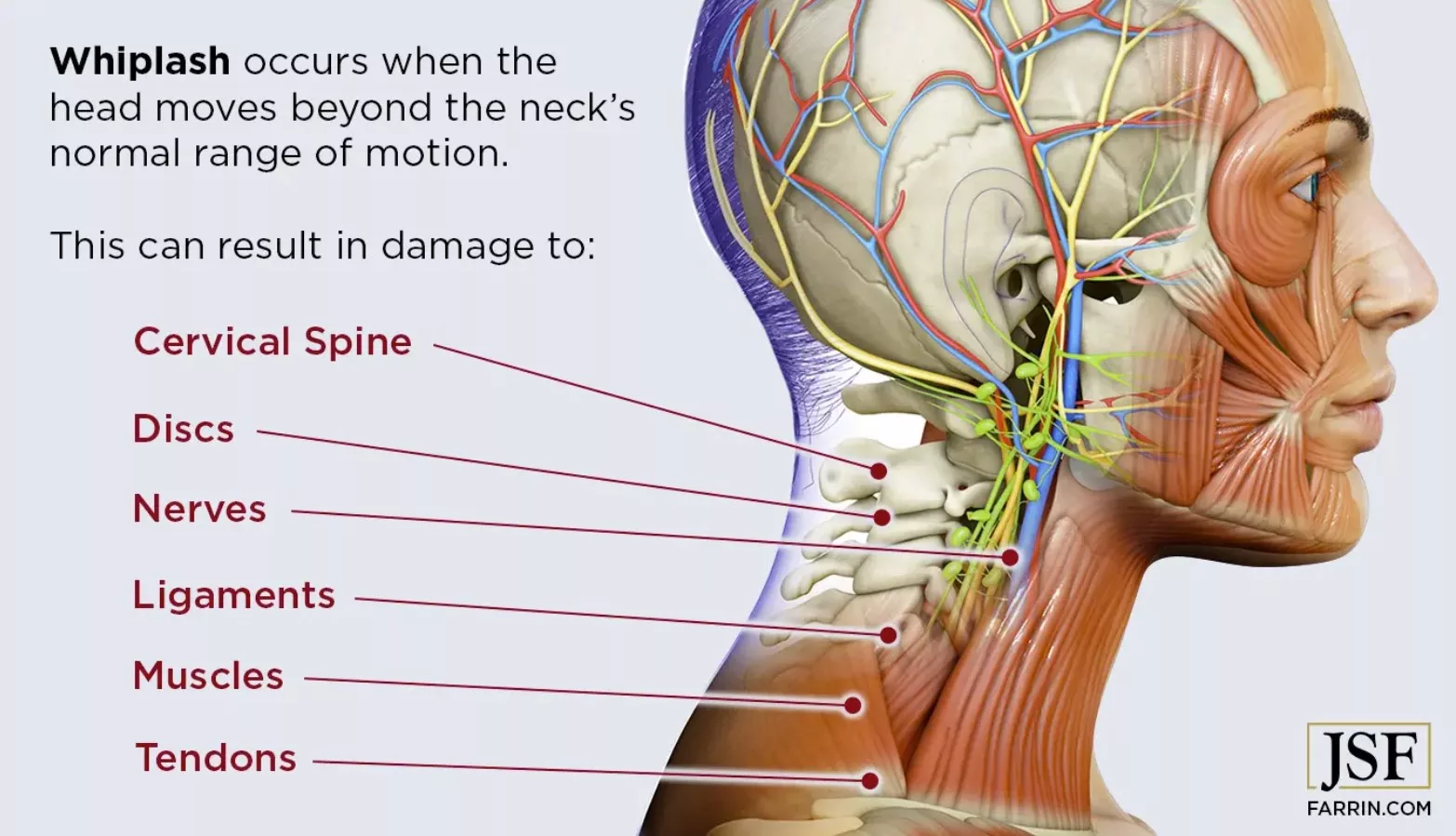
Whiplash is a type of neck injury that occurs when the head is suddenly jerked forward and then backward, causing strain or damage to the soft tissues in the neck. It is commonly associated with car accidents, particularly rear-end collisions, but can also result from sports injuries, falls, or any other incident that causes a sudden, forceful movement of the head. The rapid back-and-forth motion of the head in a whiplash injury can cause stretching, tearing, or spraining of the muscles, ligaments, tendons, and other structures in the neck. This can lead to various symptoms and discomfort. The severity of whiplash can vary from mild cases with temporary discomfort to more severe cases that result in chronic pain and long-term complications.
Causes of Whiplash
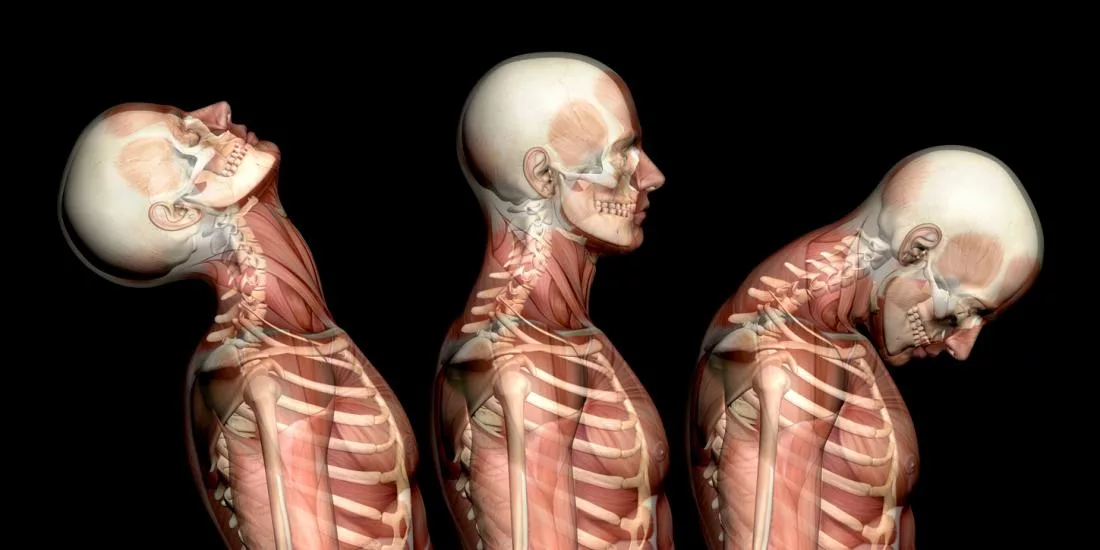
Whiplash is typically caused by a sudden and forceful back-and-forth movement of the neck, resulting in injury to the soft tissues in the neck area. The most common cause of whiplash is motor vehicle accidents, particularly rear-end collisions. However, whiplash can also occur in other situations involving sudden acceleration-deceleration forces.
Here are some common causes of whiplash:
- Car Accidents: Rear-end collisions are the primary cause of whiplash. When a vehicle is struck from behind, the impact can forcefully jerk the head backward and then forward, causing the neck to flex and extend beyond its normal range of motion. This sudden movement places significant strain on the neck structures, leading to whiplash.
- Sports Injuries: Contact sports like football, rugby, and hockey pose a risk of whiplash injuries. High-impact collisions, falls, or tackles can subject the neck to rapid and forceful movements, resulting in whiplash. Athletes involved in activities that require sudden stops, changes in direction, or physical contact are particularly susceptible.
- Physical Assault: Any form of physical assault that involves a blow or impact to the head or neck region can potentially cause whiplash. This includes incidents like being punched, kicked, or forcefully shaken.
- Roller Coaster Rides: Amusement park rides, especially roller coasters, can subject riders to sudden accelerations and decelerations. The rapid changes in speed and direction can cause the head to move forcefully, leading to whiplash-like injuries.
- Falls: Falling from a significant height or experiencing a sudden impact during a fall can result in whiplash. This can occur in various situations, such as slipping and falling, tripping on an uneven surface, or falling from a ladder or stairs.
It’s important to note that whiplash can occur even at low speeds or in seemingly minor accidents. The forces involved in the sudden movement of the neck can cause injury to the soft tissues, regardless of the severity of the impact. Additionally, certain factors may increase the risk of sustaining whiplash, such as pre-existing neck conditions, poor posture, or lack of proper headrest positioning in a vehicle. If you have been involved in an incident that could potentially cause whiplash, it’s essential to seek medical attention and undergo a thorough examination to determine the extent of your injuries and receive appropriate treatment. Early diagnosis and intervention can significantly contribute to the successful management and recovery from whiplash.
Symptoms of Whiplash
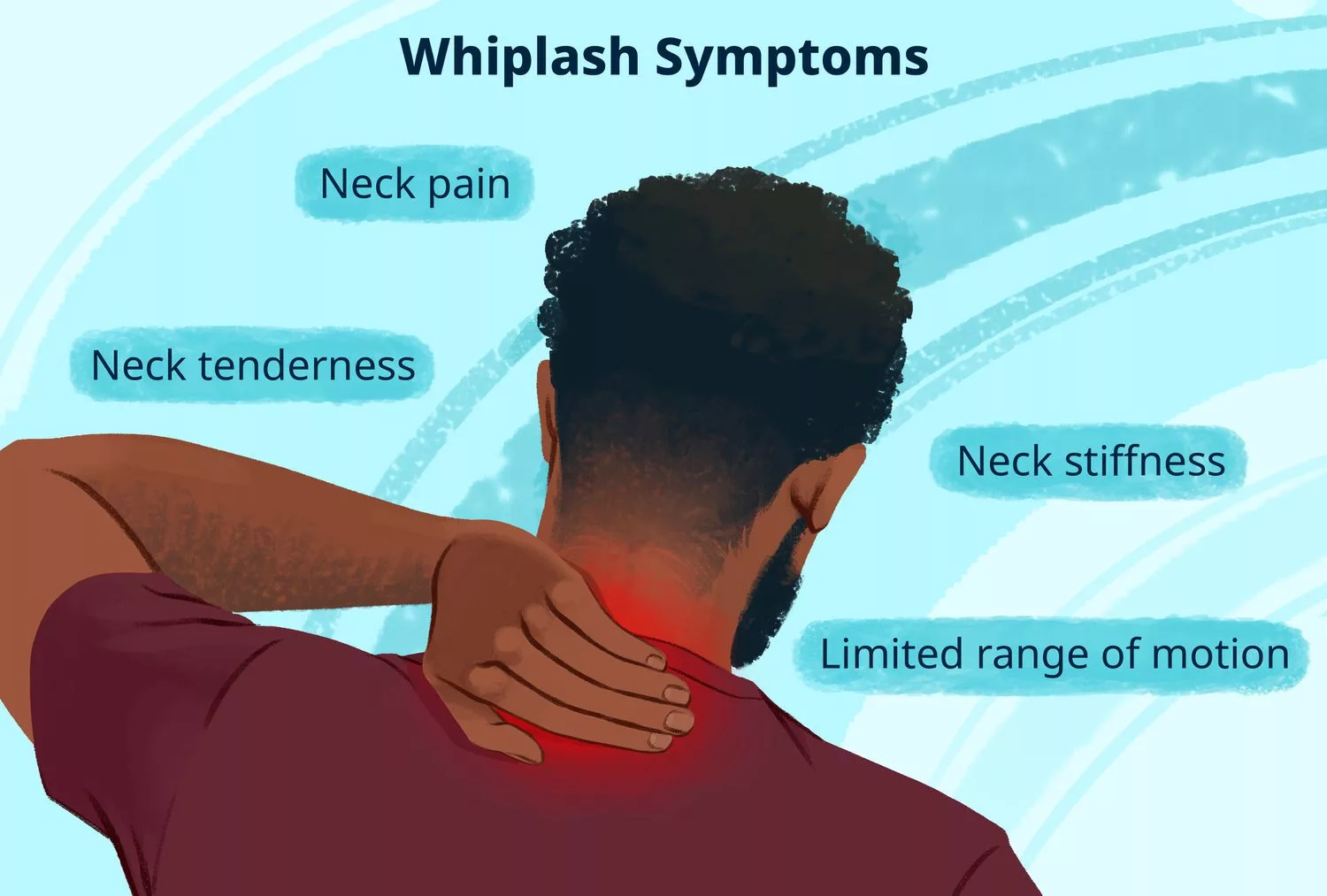
The symptoms of whiplash may not be immediately apparent after the injury and can develop gradually over time. Common symptoms include:
- Neck Pain and Stiffness: One of the primary symptoms of whiplash is neck pain and stiffness. The pain may be localized in one area or radiate to the shoulders, upper back, or arms. The stiffness can make it difficult to move the neck or perform routine activities that involve neck mobility.
- Decreased Range of Motion: Whiplash can lead to a reduced range of motion in the neck. Individuals may experience difficulty turning their head from side to side, tilting it backward or forward, or looking over their shoulder. The limited mobility can significantly impact daily activities and overall comfort.
- Headaches: Headaches are a common symptom experienced by individuals with whiplash. These headaches can vary in intensity and may be accompanied by neck pain. The headaches can be tension-type headaches or manifest as migraines.
- Dizziness and Vertigo: Some individuals with whiplash may experience dizziness, lightheadedness, or a spinning sensation known as vertigo. This symptom can affect balance and coordination, making it challenging to perform tasks that require stability.
- Fatigue and Sleep Disturbances: Whiplash can cause fatigue and disrupted sleep patterns. The pain and discomfort associated with the injury can make it difficult to find a comfortable sleeping position, resulting in restless nights and daytime fatigue.
- Cognitive Difficulties: In some cases, individuals with whiplash may experience cognitive difficulties, including problems with concentration, memory, and focus. These cognitive impairments can impact work, school, and daily tasks that require mental clarity.
- Shoulder and Arm Pain: Whiplash can extend beyond the neck and cause pain in the shoulders and arms. This pain may be a result of referred pain from the neck or direct injury to the surrounding tissues.
It’s important to note that the symptoms of whiplash may not appear immediately after the injury. They can develop gradually over hours or even days following the accident or trauma. If you experience any of these symptoms after a car accident or similar event, it’s crucial to consult a healthcare professional, such as a chiropractor or medical doctor, for an accurate diagnosis and appropriate treatment.
Chiropractic Adjustments

Chiropractic adjustments, also known as spinal manipulations or spinal adjustments, are the primary treatment technique used by chiropractors. They involve applying controlled, sudden force to specific joints in the spine or other areas of the body with the goal of improving spinal alignment, mobility, and overall function. During a chiropractic adjustment, the chiropractor uses their hands or specialized instruments to deliver quick, precise movements to the targeted area. These adjustments aim to restore proper alignment of the vertebrae in the spine, reduce joint restrictions, alleviate nerve impingements, and promote optimal nervous system functioning.
The Role of Chiropractic Adjustments
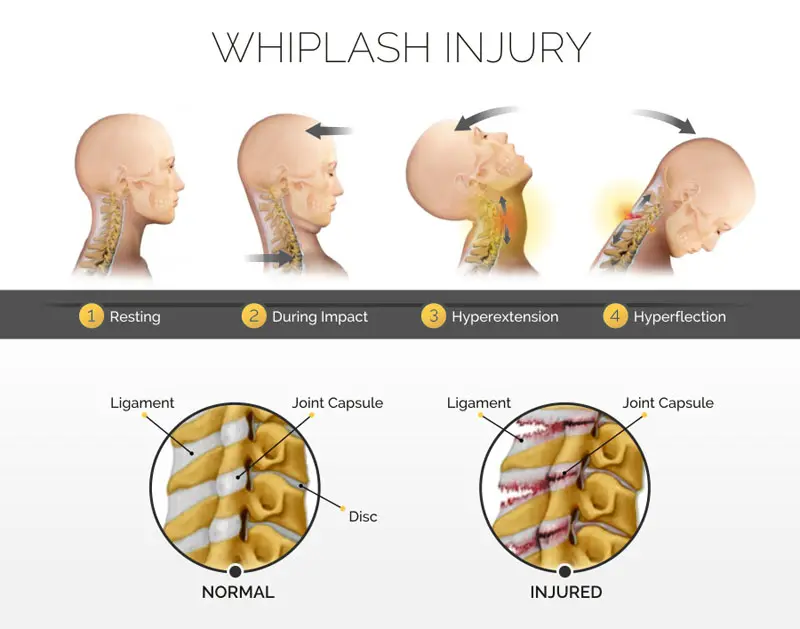
Chiropractic adjustments focus on manipulating the spine to restore its natural alignment. For whiplash patients, chiropractors use specific techniques to target the affected areas of the spine. These adjustments involve applying controlled force to the vertebrae, joints, and surrounding tissues to correct misalignments, reduce inflammation, and promote healing. By restoring proper alignment, chiropractic adjustments alleviate pressure on nerves, reduce muscle tension, and improve overall spinal function.
Benefits of Chiropractic Adjustments for Whiplash

Chiropractic adjustments offer a wide range of benefits for individuals seeking natural, non-invasive healthcare. These adjustments performed by licensed chiropractors aim to restore proper alignment and function to the spine and other joints in the body.
Below shared are some of the key benefits of chiropractic adjustments for whiplash patients:
-
Restoring Spinal Alignment
Whiplash can cause misalignments or subluxations in the spine, particularly in the cervical (neck) region. These misalignments can result in pain, restricted movement, and interference with the proper functioning of the nervous system. Chiropractic adjustments are aimed at restoring proper alignment to the spine, specifically targeting the areas affected by whiplash. Through manual manipulation techniques, chiropractors apply gentle and controlled forces to the spine to realign the vertebrae. By doing so, they help alleviate pressure on nerves, reduce inflammation, and promote optimal healing. Restoring spinal alignment not only relieves pain but also improves overall function and range of motion in the neck.
-
Reducing Muscle Tension and Spasm
Whiplash injuries often lead to muscle tension and spasms in the neck and surrounding areas. This muscle tightness can further contribute to pain, stiffness, and limited mobility. Chiropractic adjustments help release tension and relax the muscles affected by whiplash. During adjustments, chiropractors apply targeted pressure to specific muscles and soft tissues, helping to relieve tension and reduce spasms. This can provide immediate relief and allow for improved mobility and flexibility in the neck.
-
Promoting Circulation and Healing
Chiropractic adjustments can also improve circulation and promote the healing process following whiplash injuries. By restoring proper spinal alignment, adjustments help enhance blood flow to the injured areas, providing essential nutrients and oxygen for healing. Improved circulation aids in reducing inflammation and swelling associated with whiplash, facilitating the body’s natural healing mechanisms. It also helps remove waste products and toxins from the affected tissues, promoting faster recovery.
-
Addressing Secondary Effects of Whiplash
Whiplash can have secondary effects on the body, such as headaches, dizziness, and even cognitive difficulties. Chiropractic adjustments not only target the primary symptoms of whiplash but also address these secondary effects. By restoring proper alignment and function to the spine, adjustments can help alleviate tension headaches and reduce dizziness associated with whiplash. Additionally, adjustments promote optimal nervous system function, which can positively impact cognitive abilities affected by the injury.
-
Complementary Therapies and Rehabilitation
Chiropractic adjustments are often part of a comprehensive treatment approach for whiplash. Chiropractors may incorporate other complementary therapies and rehabilitation techniques to support the recovery process. These may include soft tissue therapies, such as massage or myofascial release, exercises to strengthen and stabilize the neck muscles, and lifestyle recommendations to promote healing. Chiropractors take an individualized approach to whiplash treatment, tailoring the care plan to each patient’s specific needs and condition. By combining chiropractic adjustments with other therapies, they can provide comprehensive care and support the patient’s journey towards recovery.
The Chiropractic Adjustment Process for Whiplash

Chiropractic care is a well-known and effective treatment option for individuals recovering from whiplash injuries. Chiropractors utilize specific techniques, including chiropractic adjustments, to address the underlying causes of whiplash and promote healing.
Let’s explore the chiropractic adjustment process for whiplash, from the initial consultation to the treatment sessions.
-
Initial Consultation and Evaluation: The first step in the chiropractic treatment process for whiplash is an initial consultation with a chiropractor. During this consultation, the chiropractor will take a detailed medical history and conduct a thorough physical examination. They will ask about the specifics of the whiplash incident, the symptoms experienced, and any previous treatments or therapies undertaken. This evaluation helps the chiropractor understand the extent of the injury and develop an individualized treatment plan.
- Diagnostic Imaging (if necessary): In some cases, the chiropractor may request diagnostic imaging, such as X-rays or MRI scans, to further assess the condition of the spine and soft tissues. These imaging tests can provide valuable insights into the exact location and severity of the whiplash injury, helping the chiropractor develop a targeted treatment approach.
- Treatment Plan Development: Based on the evaluation and diagnostic findings, the chiropractor will create a personalized treatment plan for the whiplash patient. This plan may include a series of chiropractic adjustments, as well as additional therapies such as soft tissue techniques, rehabilitative exercises, or lifestyle recommendations.
- Chiropractic Adjustments: The core of chiropractic care for whiplash is the chiropractic adjustment. These manual techniques are performed by the chiropractor to restore proper alignment to the spine and improve overall spinal function. The specific adjustment techniques used may vary depending on the individual’s condition and the chiropractor’s preferred approach. During a chiropractic adjustment, the patient lies on a treatment table while the chiropractor applies controlled, sudden forces to specific areas of the spine or other joints in the body. The adjustments may involve gentle thrusts, spinal manipulations, or mobilizations to realign the vertebrae and alleviate any subluxations or misalignments.
- Monitoring and Progress Evaluation: Throughout the course of treatment, the chiropractor will monitor the patient’s progress and make any necessary adjustments to the treatment plan. This may involve regular re-evaluations, adjustments in the frequency or intensity of adjustments, and modifications to other therapies incorporated into the treatment plan.
- Rehabilitation and Lifestyle Recommendations: In addition to chiropractic adjustments, the chiropractor may recommend rehabilitative exercises and stretches to strengthen the muscles supporting the neck and promote long-term healing. They may also provide lifestyle recommendations, such as ergonomic modifications, posture correction, or stress management techniques, to support the recovery process and prevent future injuries.
- Follow-up Care and Maintenance: Once the acute symptoms of whiplash have resolved, the chiropractor may recommend periodic follow-up visits for maintenance care. These visits can help ensure that the spine remains properly aligned, reduce the risk of future injuries, and support overall spinal health and well-being.
It’s important to note that the chiropractic adjustment process for whiplash may vary depending on the individual’s specific condition and the chiropractor’s preferred techniques. Each treatment plan is tailored to the patient’s unique needs and response to care. If you have experienced whiplash, consulting with a qualified chiropractor can provide valuable insights into the appropriate chiropractic adjustment process for your specific case.
Conclusion: Chiropractic Adjustments for Whiplash

Chiropractic adjustments play a vital role in the treatment of whiplash by restoring alignment to the spine and relieving pain. They provide numerous benefits, including pain relief, improved range of motion, enhanced healing, reduced inflammation, and optimized nervous system functioning. If you have experienced whiplash, seeking chiropractic care and receiving timely adjustments can significantly contribute to your recovery, helping you regain mobility and find relief from pain and discomfort.
Find Best Car Accident Chiropractor in Dallas, TX
Don’t Let Pain Dictate Your Life!
Call Now +1-844-589-7246
Are you looking for car accident chiropractor in Dallas, Texas? Longhorn Injury is offering Initial Chiropractic Consultation along with Chiropractic Adjustment Care in just $59 in Dallas, TX. Get in touch with the best chiropractors and experience pro chiropractic adjustment in Dallas, Texas.
Contact us for Best Chiropractors in Dallas, Texas for an Appointment Today.
Longhorn Injury is your Chiropractor in Dallas, TX.
Will a chiropractor help with whiplash?
Chiropractic care is a particularly effective treatment for whiplash because it is able to reduce inflammation surrounding the affected muscles and ligaments. Additionally, it restores neck and shoulder mobility.
How long does it take a chiropractor to fix whiplash?
Average recovery from whiplash can take anywhere from 6 weeks to 6 months, with periodic visits to a chiropractor throughout that time.
Should I go to physio or chiro for whiplash?
If you have suffered a severe fracture from whiplash, you'll need to go straight to the hospital. If your injury is more mild, an assessment from a Chiropractor may be very beneficial.
What not to do after whiplash?
Avoid lifting, sports, or other activities that might strain your neck. Try sleeping on a special neck pillow. Place it under your neck, not under your head. Placing a tightly rolled-up towel under your neck while you sleep will also work.
Can whiplash pain be permanent?
From the impact, whiplash can damage the soft tissues of the back, neck joints, disc, and ligaments. Depending on the severity of the impact, an individual can experience permanent or long-term effects. In such a case, the pain can last for six months or longer.
